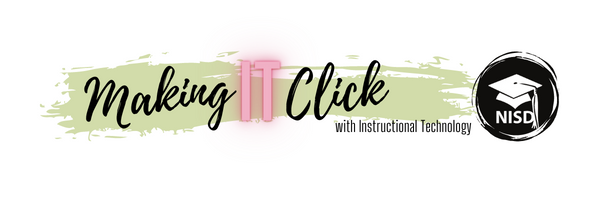 Scenario: You are a student sitting in class, eyes glancing
at the clock, counting the minutes to the bell, wanting to “escape”…Unless, you
are in Rachelle Enax’s AVID classroom at Eaton High School where your only
glances at the clock are in hopes for more time. Mrs. Enax’s students have
already spent several class periods this school year wishing for more time to
access information that will give them much needed clues for solving mysteries within educational breakout games. The escape room or breakout concept began in Japan in the
early 2000’s with escape rooms created for entertainment purposes. As the trend
grew, educators began to adopt this idea and evolve it into a type of classroom
activity that empowers students to independently search for themed content
needed to solve puzzles and unlock a series of clues, eventually “escaping” a fictional
scenario.
Scenario: You are a student sitting in class, eyes glancing
at the clock, counting the minutes to the bell, wanting to “escape”…Unless, you
are in Rachelle Enax’s AVID classroom at Eaton High School where your only
glances at the clock are in hopes for more time. Mrs. Enax’s students have
already spent several class periods this school year wishing for more time to
access information that will give them much needed clues for solving mysteries within educational breakout games. The escape room or breakout concept began in Japan in the
early 2000’s with escape rooms created for entertainment purposes. As the trend
grew, educators began to adopt this idea and evolve it into a type of classroom
activity that empowers students to independently search for themed content
needed to solve puzzles and unlock a series of clues, eventually “escaping” a fictional
scenario.
Mrs. Enax elected to try this type of activity with her students after
seeing the Breakout EDU resources available in the library media center. Breakout
EDU resources allow teachers and students access to physical breakout boxes
with already built clues and hints as well as completely digital breakouts that cover a
variety of content areas. While completing their first “Back to School Boogie” breakout
box activity, several of Enax’s students commented that they enjoyed the
activity because “it allowed them to get information and learn things
on their own and it was so different than what they usually do in school that it didn’t
even feel like school.” After completing a second digital breakout, one student
commented that “it was much better than someone lecturing us or just watching
videos.” The student also appreciated that if there was something she already
knew, she didn’t have to spend a lot of time on that and could move on to new
information on her own. After the first couple of breakout experiences, Enax’s
students have begged for additional breakout opportunities to help them study and discover concepts that are part of the AVID
curriculum.
Several other EHS teachers are beginning create their own completely digital
breakout games and try out the Breakout EDU resources available in the EHS library media center. Karri McGovern, an Eaton social studies teacher, noted that several of her students were
complimentary of the digital breakout idea after working through an academic
honesty scenario presented as an option for freshmen during PSAT testing. McGovern said that “Even the reluctant players bought into the game eventually.
It took some of them a few minutes to start thinking the right way and find the
first couple of clues, but once they did, they were engaged and determined to
finish.” Students in Parween Noori’s freshman class stated that it was “fun to
work together in a group to figure out the clues. You really had to look at the
videos and articles closely to find the answers.”
This increasingly popular active approach to classroom
instruction is part of a growing movement of educational strategies that puts responsibility for learning into the hands of the students, reversing traditional teacher-centered instructional strategies. These methods create more opportunities for engagement, collaboration, creativity, and excitement over the same content.
The critical thinking and problem solving required of students in these
scenarios tap into key academic and life skills needed while also exposing them
to course content.
When reflecting back on the activities done in
class so far, Mrs. Enax’s students credit their breakout experiences with improved
team building and communication skills and they are excited to see what
additional opportunities they will experience with future breakouts, maybe even getting to create their own.



No comments:
Post a Comment
Note: Only a member of this blog may post a comment.